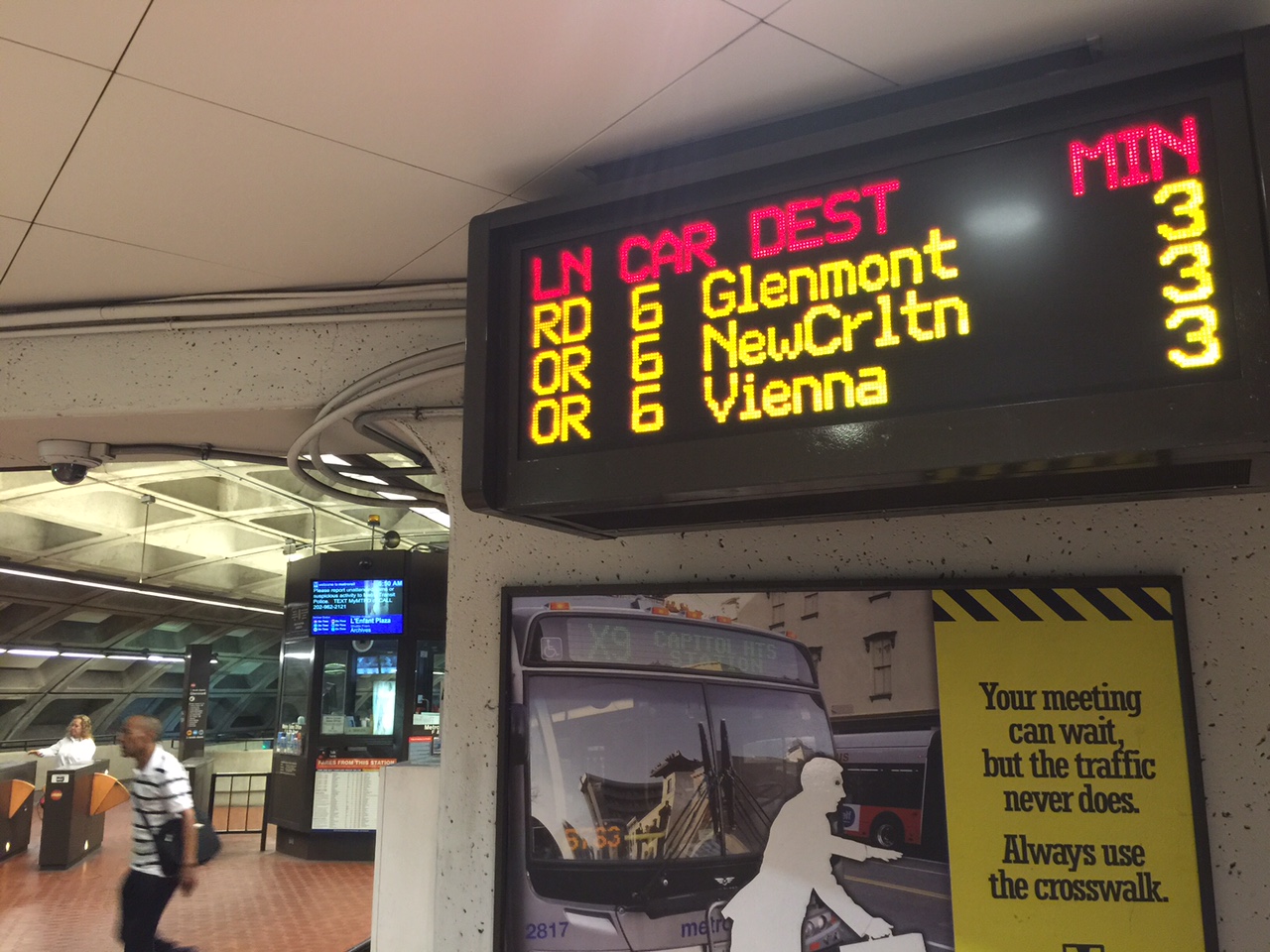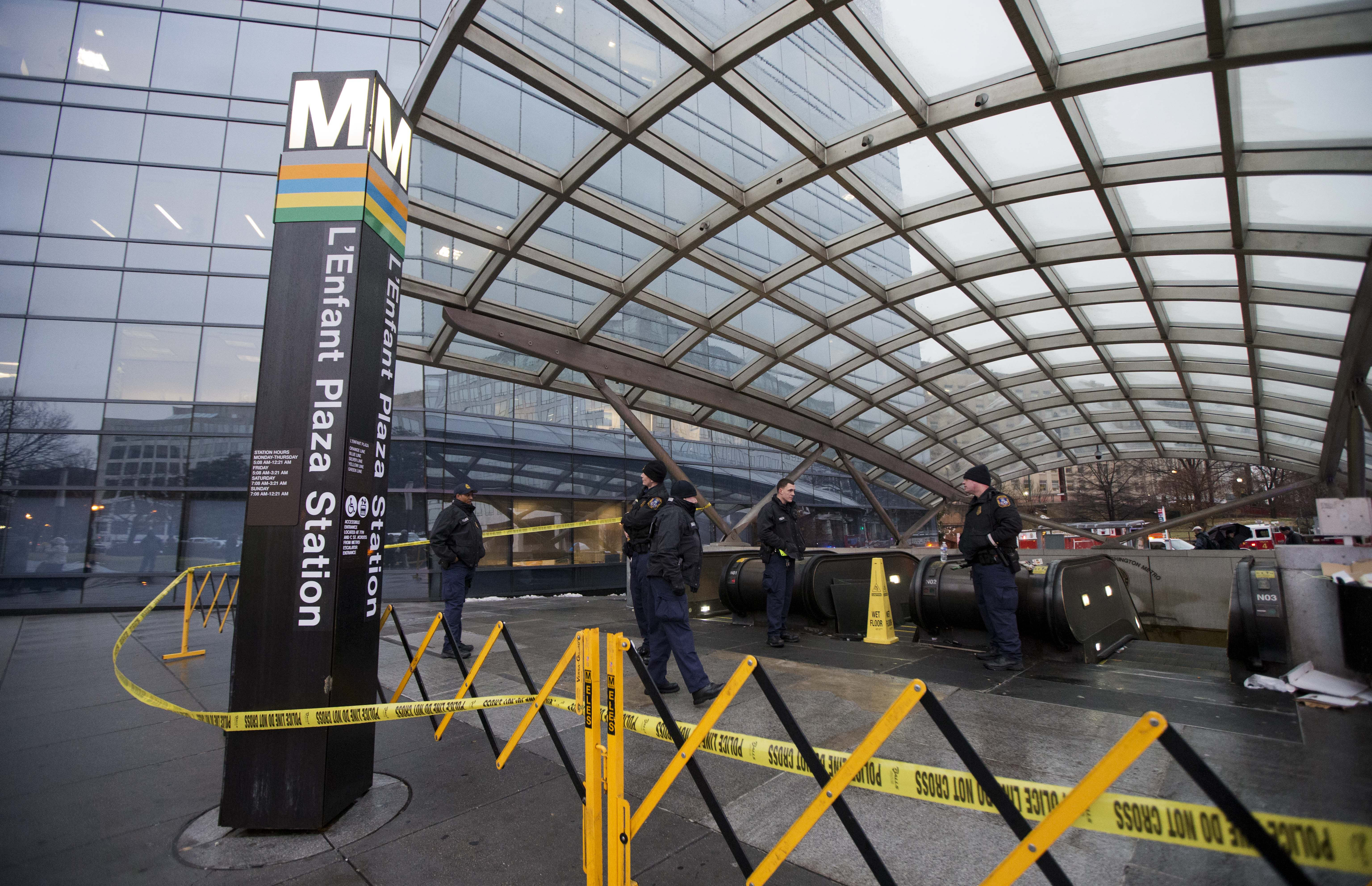WASHINGTON — Metro’s decision to take some rail cars out of service for maintenance may lead to fewer smoke and fire incidents in the system.
A WTOP review of publicly available information on the last eight full weekdays of Metro service, which included fewer eight-car trains because all 4000 series cars were removed after some doors opened on moving trains, finds just two smoke or arcing incidents publicly reported by Metro. There was also one unidentified track problem, and a report of smoke that did not turn out to be an issue.
The review of the previous eight weekdays, when Metro was running its usual number of rush-hour trains, found four confirmed smoke or fire incidents, in addition to two unidentified track problems and one other report of smoke.
Because of the small sample size, there is no definite link, but the Federal Transit Administration’s scathing report issued Wednesday on the safety issues facing Metro said the increasing amount of power eight-car trains draw through the third-rail system “has likely increased” smoke and track issues.
Metro spokesman Dan Stessel said Thursday afternoon that comparing the weekdays may not tell the whole story, as the wear and tear on some parts of the track system can be cumulative.
He points to the four arcing events last weekend that disrupted the Red Line, in the middle of the weekdays that have had fewer eight-car rush hour trains. Stessel also says that arcing events are not always publicly reported until quarterly reports are issued.
Also, after the deadly smoke incident at L’Enfant Plaza, Metro said it would look at slowing down trains in tunnels in the core of the system downtown as a way to reduce the amount of power flowing through the system. Running more six-car trains in place of eight-car trains could have a somewhat similar impact.
“WMATA has been experiencing a growing number of fires and smoke events, whether related to the changing performance of the traction power system as it manages new electricity demands for 8-car trains, changing weather conditions requiring sudden spikes in energy consumption for heating or cooling, increased debris on tracks and grime build-up on insulators and other traction power system components, or other causes,” the FTA report says.
“In 2014, WMATA experienced almost twice as many events requiring fire suppression as in 2013 (29 versus 15). For the first four months of 2015, WMATA has experienced 2 major fire events and 10 events requiring suppression, and is on target to exceed last year’s total,” it continues.
Metro is in the midst of long-term work to upgrade the system to handle more eight-car trains, which the FTA says will reduce the risk of overloading the system and damaging trackside equipment or trains.
Stessel says it is not possible to concretely determine any trends based on just eight days of service with fewer eight-car trains.
There is no word on when Metro will clear its 4000 Series cars to return to service, although Metro hoped the inspections and fixes for potential door issues would be done this week.
Even after those cars return to service, Metro says it will run fewer eight-car trains than usual on Mondays and Fridays through at least September. Metro says that will allow for more maintenance time for cars that have spent more time on the rails ever since the Silver Line opened because of delays in the planned arrivals of new 7000 Series cars. But running more six-car trains will also lead to trains drawing less power. In addition to potentially contributing to fewer smoke incidents, the change also saves Metro some money.
The FTA Report found that some inspections on rail cars were not being carried out properly, including a failure to clean key parts of the cars with a chemical solution that could remove grease and grime that can contribute to problems. Similar accumulations of dust and grime were found on third rail insulators.







